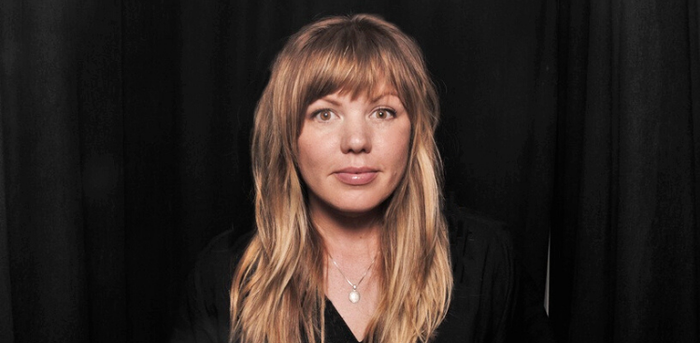
Here at The Muse, we know that there's no better way to understand how to ace your own employer brand than by seeing some best practices in action.
Well, you're in luck—because that's exactly what our Employer Spotlight Series does. We feature all sorts of helpful advice and insights from companies that are totally crushing their employer brands, so that you can learn from their success.
This month, we chatted with Jennifer McKaig, Diversity and Inclusion Lead at Etsy, to hear about the company's diversity and inclusion initiatives—as well as how they communicate those values to talent.
How did you find your current role, and does it align with your background (college or previous work experience)?
I have a graduate degree in social work and prior to working in tech, I supported people through counseling, case management, and residential services. I worried that I wouldn’t find a purposeful job outside of social work, but when I found a role at Etsy, I fell in love with the socially-driven mission and thoughtful environment. I immediately wanted everyone to have an opportunity to experience a rewarding and enriching work environment, and my role grew organically from a desire to widen the doors and let others in.
What is one tool or piece of advice you wish you'd known about when you first started working at Etsy?
Imposter syndrome is real, but it is manageable if you have the right support. Find a mentor, someone you trust and who has the experience and the expertise to help guide you in your profession. This person does not have to work at the same company, as long as they understand the challenges you are working through at this stage in your career.
What are some of the current D&I initiatives at Etsy and where are you seeing success?
We have taken a holistic approach to increasing diversity, ensuring equity, and fostering inclusion at Etsy. We have structured our hiring and evaluation process to ensure every person can expect the same experience, and we have integrated tools to mitigate unconscious bias. We have regular workshops focused on managing difference and building self-awareness, a large Employee Resource Group program, gender-inclusive restrooms (we measure gender in non-binary terms), gender-neutral parental leave, and transgender-inclusive medical benefits. We are also data-driven and measure our outcomes to guard against unintended negative impacts.
You've made the decision to publicly announce your diversity hiring initiatives. What led you to this decision and how do you stay accountable for maintaining the standards you set?
We have published our diversity metrics publicly since 2014. Sharing updates transparently is an important way to hold ourselves accountable to Etsy’s values. Our current Impact Strategy and most recent Impact Report is an evolution of our social impact approach and are directly aligned with our business model and goals. Our Impact Committee is a cross-functional group of leaders who work to integrate our impact goals into functional areas of the business.
From a recruiting standpoint, how do you communicate your initiatives to candidates and what type of feedback do you receive?
The Talent Acquisition team is prepared to answer all kinds of questions about our diversity strategy and they often do, but I also believe actions speak louder than words. We can communicate our intent but if there is nothing to show for it, then we are not actually creating change. When applicants ask questions about inclusive benefits or internal policies, the subtext is: “Will I succeed here? Will I feel comfortable at work?” Our answer is yes. We have made very purposeful investments in benefits and programs that are designed to build equity. This helps ensure that hiring managers also know how to answer questions about diversity and inclusion.
How long did it take you to build your programs? What type of employee participation do you see?
It takes time—sometimes years—to develop a strong program. Programs evolve with the business and the culture. Our Employee Resource Groups are really active. We have seven groups, and for a company of our size, that is quite a large number. They help organize workshops, speakers, and internal events that are focused on building inclusion and cultural awareness. The events are popular because they are decentralized. We see that people are more likely to participate if they have some sense of ownership and influence in the process.
What stat or accomplishment relating to D&I are you most proud of?
We recently publicly reported on our progress in the Impact Report. Etsy has reached gender parity on the board of directors, the senior executive team, and within the company. We are focused on growing our racial diversity and we are starting to see some incremental changes. In 2017, 29% of our engineers identified as women and in 2018 that number is increasing. Diversity and inclusion is more than numbers and I am really proud that Etsy has engaged in brave conversations at every level.
To create more equitable opportunities to work in tech, I think it’s important to examine cultural and historical marginalization and to push against it with the choices you make. For example, organizations make large choices such as where your offices are located, the vendors and partnerships you choose, and the organizational values you uphold. But, there are individual micro-decisions that also matter. Who is in your network? How do you decide who is invited to the meeting? Whose ideas get heard? This is complicated and challenging work which asks people to dig deep into their personal experiences and attitudes.
What's something you're currently reading or listening to that you love?
I love podcasts. One great one is called “Neighbors” from Nashville Public Radio, and it’s about the things that connect us. When I heard the first episode, I was inspired to get out and meet my own neighbors—which is daunting in NYC. I ended up going to a community board meeting and learning so much about my neighborhood.